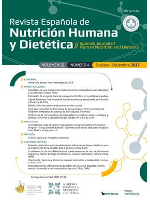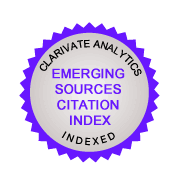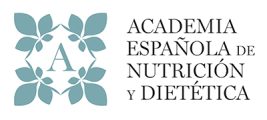Compliance with Nutritional Requirements in Children Between 6 and 12 Months of Age According to Consumption of Cow's Milk or Formula in Argentina: A Cross-Sectional Study.
DOI:
https://doi.org/10.14306/renhyd.29.2.2369Keywords:
Breastfeeding, Infant formula, Mineral deficiency, Nutritional needsAbstract
Introduction: The first year is a crucial moment in the life cycle. Nutrition, breastfeeding, and the dairy component of the diet play a fundamental role in preventing nutritional excesses and deficiencies. The main objective was to evaluate the extent of improvement on nutrient intake and adequacy after replacing any dairy component other than human milk with follow-up formula.
Methodology: Observational, descriptive, cross-sectional study based on secondary data from the 2nd National Nutrition and Health Survey. The population involved was 1,850 children between 6 and 12 months. Their dairy pattern was characterized, and nutrient adequacy was determined (intake versus estimated mean requirement) for 7 minerals and vitamins (in addition to proteins) before (original baseline data from the Survey) and after theoretically replacing any consumption of cow's milk with an equivalent amount of follow-up formula. Statistical tests for related samples were applied: parametric T-Student and nonparametric Wilcoxon tests.
Results: 38% of children consume cow's milk (39.5% of them exclusively). Omega 3 fatty acids and iron are the most deficient nutrients, followed by zinc and vitamin D. In the case of proteins, the intake doubles its requirement in 57% of children. In all nutrients, the t test showed a significant bilateral difference, as did the Wilcoxon one (with p values tending to zero). The changes were significant in each nutrient considered either as an increase (micronutrients) or as a reduction in intake (proteins).
Conclusions: After replacing cow's milk consumption with follow-up formula, deficiencies of essential nutrients and excess protein in the diet of children between 6 and 12 months of age decrease significantly, especially in children who only consume cow's milk.
Funding: Research grant in Child Nutrition awarded by the company Nutricia-Bagó.
References
(1) Victora C, De Onis M, Hallal PC, et al. Worldwide timing of growth faltering: revisiting implications for interventions. Pediatrics. 2010;125(3):e473-e480. doi: 10.1542/peds.2009-1519.
(2) Victora CG, Bahl R, Barros AJD, et al. Breastfeeding in the 21st century: epidemiology, mechanisms, and lifelong effect. Lancet. 2016;387(10017):475-490. doi: 10.1016/S0140-6736(15)01024-7.
(3) Kramer MS, Kakuma R. Optimal duration of exclusive breastfeeding. Cochrane Database Syst Rev. 2012;8:CD003517. doi: 10.1002/14651858.CD003517.pub2.
(4) World Health Organization. Essential nutrition actions: improving maternal, newborn, infant and young child health and nutrition. Geneva: World Health Organization; 2013.
(5) Ministerio de Salud de la Nación. Segunda Encuesta Nacional de Nutrición y Salud (ENNyS II). Buenos Aires: Ministerio de Salud de la Nación; 2019.
(6) Ministerio de Salud de la Nación. Guía de práctica clínica sobre alimentación complementaria para los niños y niñas menores de 2 años. Buenos Aires: Ministerio de Salud de la Nación; 2021.
(7) World Health Organization (WHO). Principios de orientación para la alimentación de niños no amamantados entre los 6 y los 24 meses de edad. Geneva: World Health Organization; 2005.
(8) Graczykowska K, Kaczmarek J, Wilczyńska D, Łoś-Rycharska E, Krogulska A. The consequence of excessive consumption of cow's milk: protein-losing enteropathy with anasarca in the course of iron deficiency anemia—case reports and a literature review. Nutrients. 2021;13(3):828. doi: 10.3390/nu13030828.
(9) World Health Organization (WHO). Guideline for complementary feeding of infants and young children 6–23 months of age. Geneva: World Health Organization; 2023.
(10) Eussen SR, Pean J, Olivier L, Delaere F, Lluch A. Theoretical impact of replacing whole cow's milk by young-child formula on nutrient intakes of UK young children: results of a simulation study. Ann Nutr Metab. 2015;67(4):247-256.
(11) Sunardi D, Wibowo Y, Mak TN, Wang D. Micronutrient intake inadequacies in different types of milk consumers in Indonesian children 1–5 years: dietary modeling with young child milk improved nutrient intakes. Front Nutr. 2023;10:1169904.
(12) Kehoe L, Walton J, McNulty BA, Nugent AP, Flynn A. Dietary strategies for achieving adequate vitamin D and iron intakes in young children in Ireland. J Hum Nutr Diet. 2017;30(4):405-416.
(13) López-Sobaler AM, et al. Impacto de la vitamina D en la salud. Dificultades y estrategias para alcanzar las ingestas recomendadas. Nutr Hosp. 2022;39(spe3):30-34.
(14) Alvarado CS, et al. Avances en el diagnóstico y tratamiento de deficiencia de hierro y anemia ferropénica. An Fac Med. 2022;83(1):65-69.
(15) Puca D, Estay P, Valenzuela C, Muñoz Y. Efecto de la suplementación con omega-3 durante la gestación y la lactancia sobre la composición de ácidos grasos de la leche materna en los primeros meses de vida: una revisión narrativa. Nutr Hosp. 2021;38(4):848-856.
(16) Ehrlich JM, Catania J, Zaman M, Smith ET, Smith A, Tsistinas O, Bhutta ZA, Imdad A. The Effect of Consumption of Animal Milk Compared to Infant Formula for Non-Breastfed/Mixed-Fed Infants 6–11 Months of Age: A Systematic Review and Meta-Analysis. Nutrients. 2022;14(3):488. Doi: 10.3390/nu14030488.
(17) Mansur JL. Vitamina D en pediatría, embarazo y lactancia. Arch Argent Pediatr. 2018;116(4):286-290.
(18) Vázquez-Frias R, Ladino L, Bagés-Mesa MC, Hernández-Rosiles V, Ochoa-Ortiz M, et al. Consenso de alimentación complementaria de la Sociedad Latinoamericana de Gastroenterología, Hepatología y Nutrición Pediátrica: COCO 2023. Rev Gastroenterol Mex. 2023;88(1):57-70. doi: 10.1016/j.rgmx.2022.11.001.
(19) Ministerio de Salud de la Nación. Segundo Informe de Indicadores Priorizados. Segunda Encuesta Nacional de Nutrición y Salud (ENNyS II). Buenos Aires: Ministerio de Salud de la Nación; 2022.
(20) UNICEF Argentina, Centro de Estudios sobre Nutrición Infantil. Prácticas de lactancia y alimentación complementaria en niños y niñas menores de 2 años de la Argentina. Ciudad Autónoma de Buenos Aires: UNICEF y CESNI; 2024.
(21) Blasi SN, Britos S, Carosella MV, Tonietti MN. Adecuación de la alimentación complementaria en diferentes escenarios de componente lácteo durante el primer año de vida. Actualización en Nutrición. 2024;25(2):57-70. doi: 10.48061/SAN.2024.25.2.57.
(22) Becerra Bulla F, Poveda Espinosa E, Vargas Zarate M. El hierro en la alimentación complementaria del niño lactante: una revisión. Perspectivas en Nutrición Humana. 2021;23(1):85-97. doi: 10.17533/udea.penh.v23n1a07.
Published
How to Cite
Issue
Section
License
Copyright (c) 2020 Sergio Britos, Catalina Daniela Igual

This work is licensed under a Creative Commons Attribution-NonCommercial-ShareAlike 4.0 International License.











